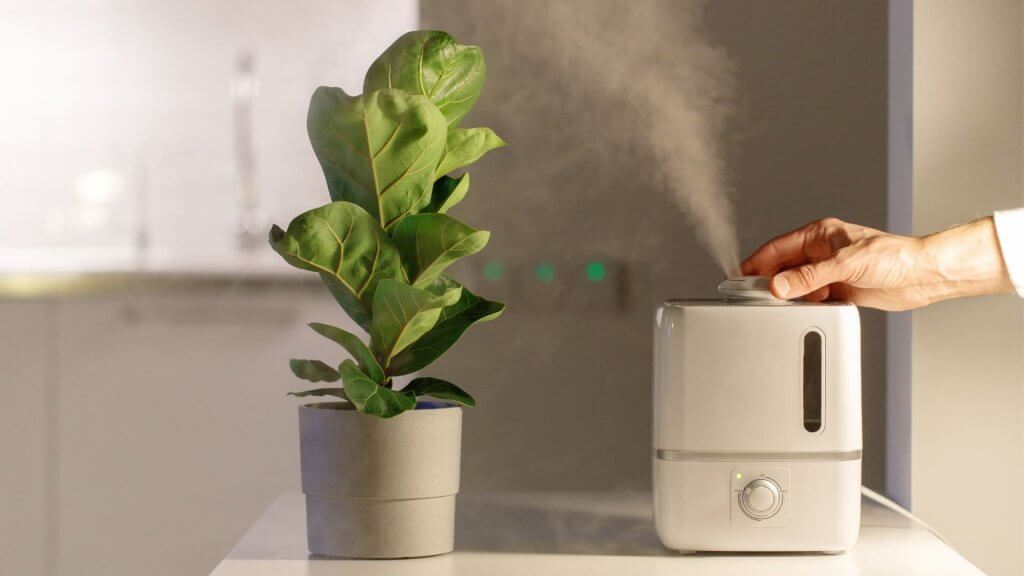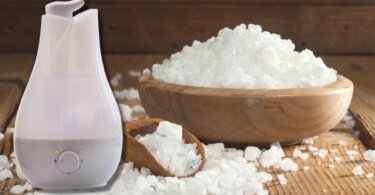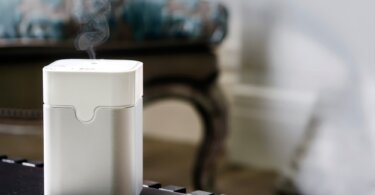Many indoor plants thrive in hot and humid climates. The United States has a diverse climate ranging from tropical to dry, and arctic tundra to hot deserts. So unless you live in an area with a tropical climate, you may want to consider an alternative source of humidity like a humidifier for your plants.
If the leaves on your plants are turning brown and shedding off or the soil feels dry to the touch, then you will want to consider a humidifier for your plants. Let us understand how to identify when your plants need extra humidity and why a humidifier could be the best solution.

How Do I Know if My Plants Need More Humidity?
When you live in a dry climate, your plants might suffer, but that does not mean you can just keep watering the plants. Humidity refers to the water content in the air surrounding the plant. Watering the roots does not increase the air’s moisture, so you would need additional measures to bolster the plants’ environment.
But before you look for ways to improve humidity, you need to ensure that your plants actually need more humidity. You can look out for a few signs on your plants to determine if they need more moisture.
- The tip of the leaves or the whole leaf will turn brown.
- The plant will shed more leaves than usual.
- The plant will become droopy and wilt.
- The top layer of the soil dries out quickly, even after sufficient watering.
- When you touch the foliage, it feels crispy.
Why Do Houseplants Need a Humidifier?
Most houseplants grow well in humid climates as they originate from rainforests with a tropical climate. Except for a few plants like succulents and cactus, most plants don’t survive in hot and dry weather. There are a few reasons why houseplants need a humidifier.
Some Houseplants Have a Thin Leaf System
When we water the roots of the plants, the water goes to the leaves. Depending upon the type of plant, the leaves can either store the water or release it into the air. If it’s a cactus or a succulent, it stores the water.
Since tropical plants mostly grow in rainforests, the leaves are not designed to hold water. Instead, with the abundance of rain, the leaves of these plants release excess moisture in the air through the stomata. Stomata are pores in the leaves that let water out and carbon dioxide in.
The Indoor Environment Has Less Humidity
Tropical plants thrive in rainfall and a highly humid climate in the rainforest. The environment inside your home does not have the same humidity and is not ideal for your plants.
During rains, the air inside your home contains sufficient humidity, and the plants thrive.
During the summers, the air might have a relative humidity of 40 to 60%, which will be enough for plants. But winters can be harsh, and especially when using a space heater, the humidity can drop to 10%.
You may have felt your skin getting drier during the winters. Indoor plants would feel the same dryness. Lowered humidity can cause distress to plants that need more moisture in the air.
Misting or Pebble Tray Is Not Enough
People often think that misting their plants will help increase the humidity, but this is not quite sufficient. Misting can increase the humidity level for some time, but for it to work, you would need to mist at an interval of every 30 minutes.
Also, spraying water mist on your plants under direct sunlight can cause burn spots since the water droplets will act as magnifying glasses. Also, if you mist your plants at night, the water will not evaporate quickly, which can lead to fungus and mold on the leaves.
Another way to increase humidity is by placing a tray filled with water near the plants. The water will evaporate and create the air near your plants humid. This pebble tray technique works but is not as effective as employing a humidifier.
Some Houseplants Have a Less Robust Root System
Roots are the primary source for plants to absorb water. Tropical plants have less robust root systems than the abundance of water in a rainforest, and they don’t need to search for water.
Some plants absorb moisture from the air, as these species are known as epiphytic plants. Plants with less robust root systems or no roots depend on environmental humidity to thrive.
Types of Humidifiers for Plants
Humidifiers for plants differ from regular humidifiers. There are two different types of humidifiers for plants.
Evaporative
In evaporative humidifiers, airflow created by a fan is used to pull water from a wet wick, creating a water mist.
These humidifiers also have filters which can be the breeding ground for bacteria and molds. To avoid this, you will want to change the filters from time to time.
These humidifiers don’t cost much, but they can be noisy due to their fan.
Ultrasonic
The second type of humidifier would be an ultrasonic one. These humidifiers work via ultrasonic vibration to aid in the evaporation of water. Although these units are costlier than the evaporative humidifiers, they are quieter and don’t require any filter change.
Related article: what is the best water to use in a humidifier?
Best Practices for Plant Humidifiers
Placing the Humidifier
The best place to keep a humidifier would be the center of the room, so the humidity level in the room will rise evenly. It would be best if you never place the humidifier too close to the plants as condensation will result in water droplet buildup on the leaves, which can lead to the growth of mold and bacteria.
Running the Humidifier
Mornings are the best time to run the humidifier as plants absorb most moisture during this time. Also, running the humidifier late in the day can result in an extra humid room at night. If the air is particularly dry, run the humidifier for 3 to 5 hours. Use the humidifier for 2 to 3 hours if the air feels humid.
Filling the Humidifier
While filling the humidifier, ensure that you add distilled water as water with mineral content may lead to deposits in the humidifier. Also, using impure water is not ideal for your plant’s health.
Cleaning the Humidifier
Since a humidifier works with water, it is prone to develop bacteria and mold, so you must clean the humidifier periodically. While cleaning the humidifier, use antimicrobial and antibacterial cleaners like baking soda and vinegar. Also, give the humidifier the last rinse of warm water to remove all the cleaning substances.
Make sure you check out our selection of Best Humidifiers for Hard Water.
Frequently Asked Questions
How do you humidify a plant without a humidifier?
There are a few methods you can use to humidify a plant without a humidifier.
- Placing a tray filled with pebbles and water near the plants also helps.
- Grouping all the indoor plants together can also help.
- You can try placing the water in a damp area like a bathroom.
What indoor plants need a humidifier?
Almost all leafy indoor plants originate from the tropical climate of the rainforest. These plants, like Orchids, English Ivy, Monstera, and others that don’t fare well in dry climates would benefit from a humidifier.
Do bowls of water help humidify?
Yes, placing bowls of water in a room can work somewhat like a humidifier. The water in the bowl evaporates into the air and increases the air’s moisture content.
Related article: DIY homemade humidifier solutions.
Wrapping Up
If you live in an area with a dry climate, then chances are that the air inside your home doesn’t contain enough moisture for your plants to grow well. If you see the leaves turning brown or the plants feel lifeless, adding a humidifier to your home will help them thrive.
Thank you for reading this article, and we hope you have gained a better understanding of why a humidifier might benefit your plants.
Related articles:
Why Use a Humidifier in Winter?
What Should I Set My Humidifier To?
Can a Humidifier Cause Mold on Walls?





Leave a Comment